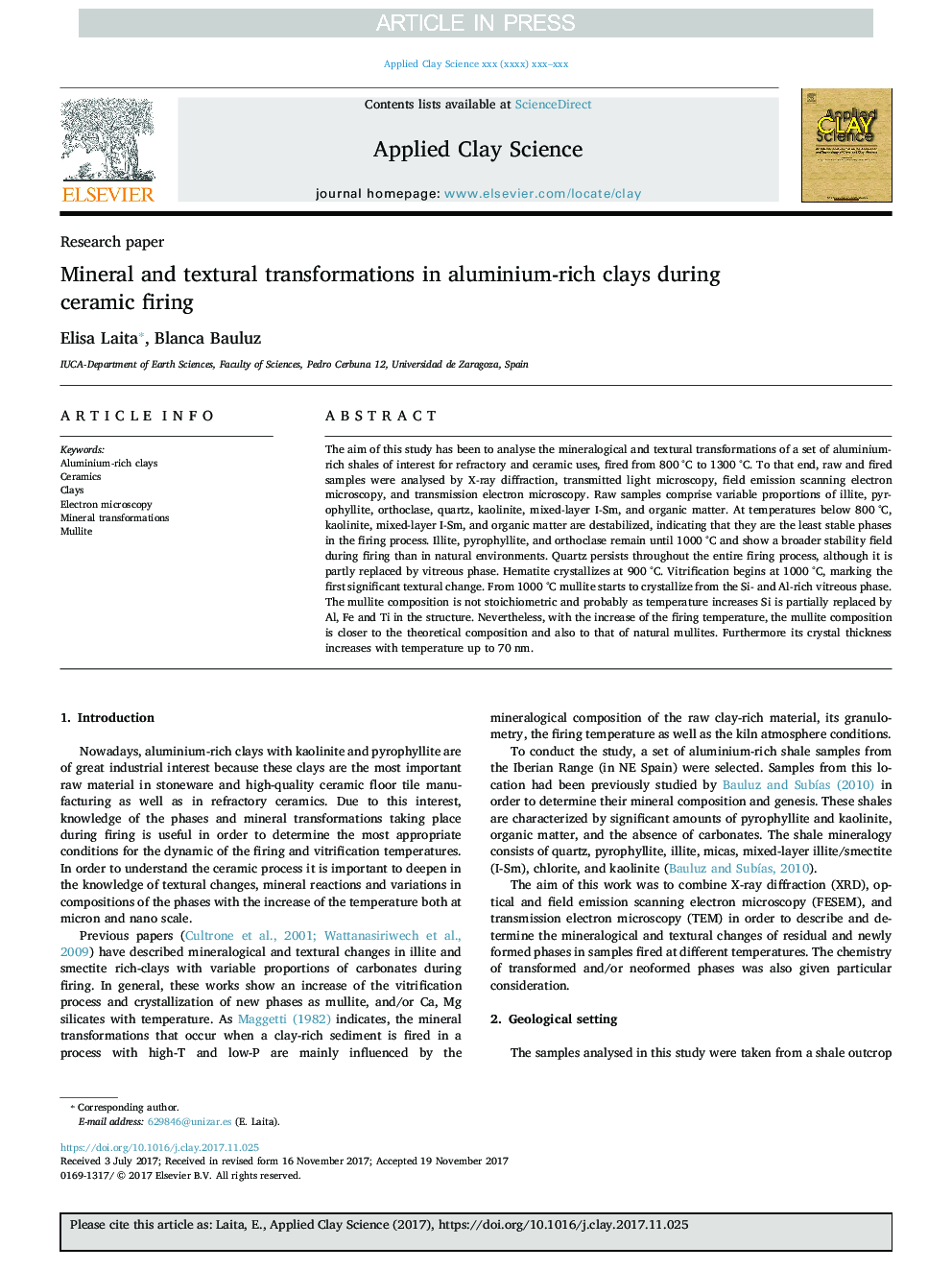| Article ID | Journal | Published Year | Pages | File Type |
|---|---|---|---|---|
| 8046348 | Applied Clay Science | 2018 | 11 Pages |
Abstract
The aim of this study has been to analyse the mineralogical and textural transformations of a set of aluminium-rich shales of interest for refractory and ceramic uses, fired from 800 °C to 1300 °C. To that end, raw and fired samples were analysed by X-ray diffraction, transmitted light microscopy, field emission scanning electron microscopy, and transmission electron microscopy. Raw samples comprise variable proportions of illite, pyrophyllite, orthoclase, quartz, kaolinite, mixed-layer I-Sm, and organic matter. At temperatures below 800 °C, kaolinite, mixed-layer I-Sm, and organic matter are destabilized, indicating that they are the least stable phases in the firing process. Illite, pyrophyllite, and orthoclase remain until 1000 °C and show a broader stability field during firing than in natural environments. Quartz persists throughout the entire firing process, although it is partly replaced by vitreous phase. Hematite crystallizes at 900 °C. Vitrification begins at 1000 °C, marking the first significant textural change. From 1000 °C mullite starts to crystallize from the Si- and Al-rich vitreous phase. The mullite composition is not stoichiometric and probably as temperature increases Si is partially replaced by Al, Fe and Ti in the structure. Nevertheless, with the increase of the firing temperature, the mullite composition is closer to the theoretical composition and also to that of natural mullites. Furthermore its crystal thickness increases with temperature up to 70 nm.
Related Topics
Physical Sciences and Engineering
Earth and Planetary Sciences
Geochemistry and Petrology
Authors
Elisa Laita, Blanca Bauluz,
